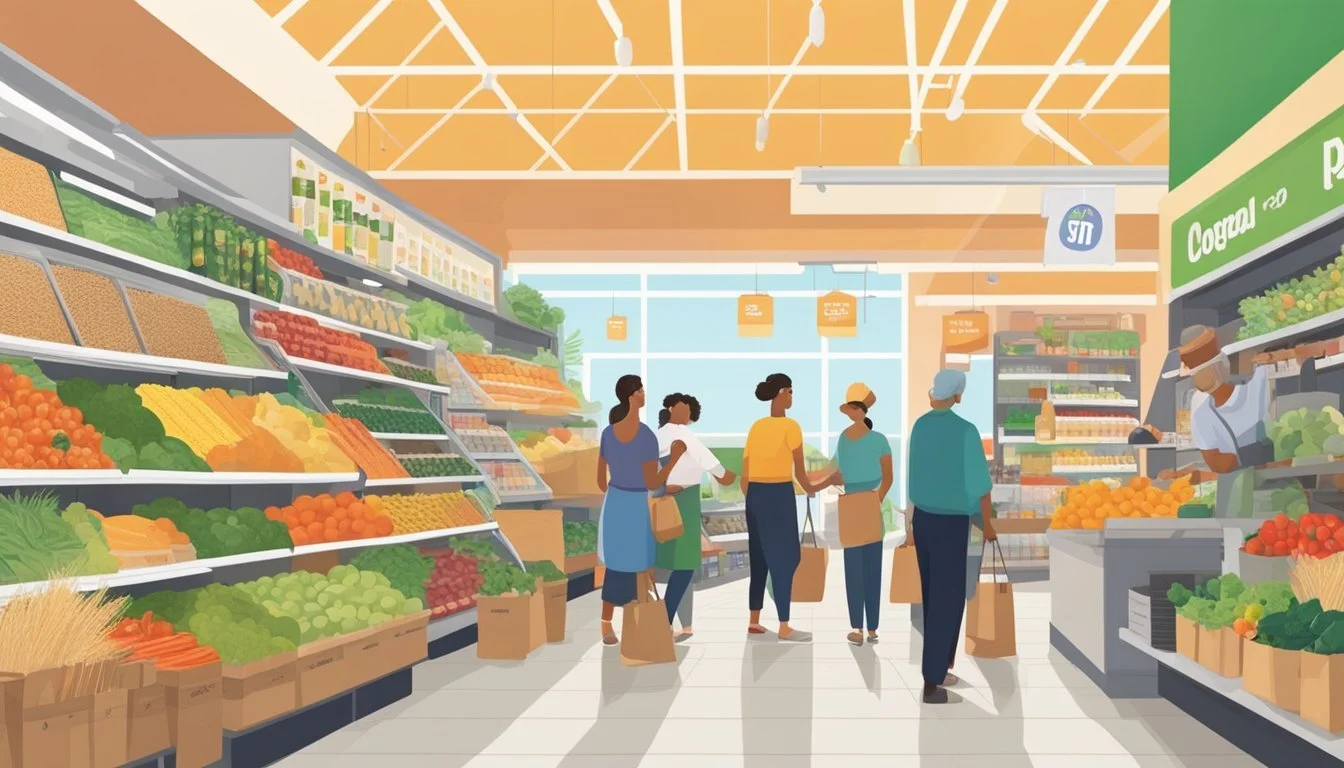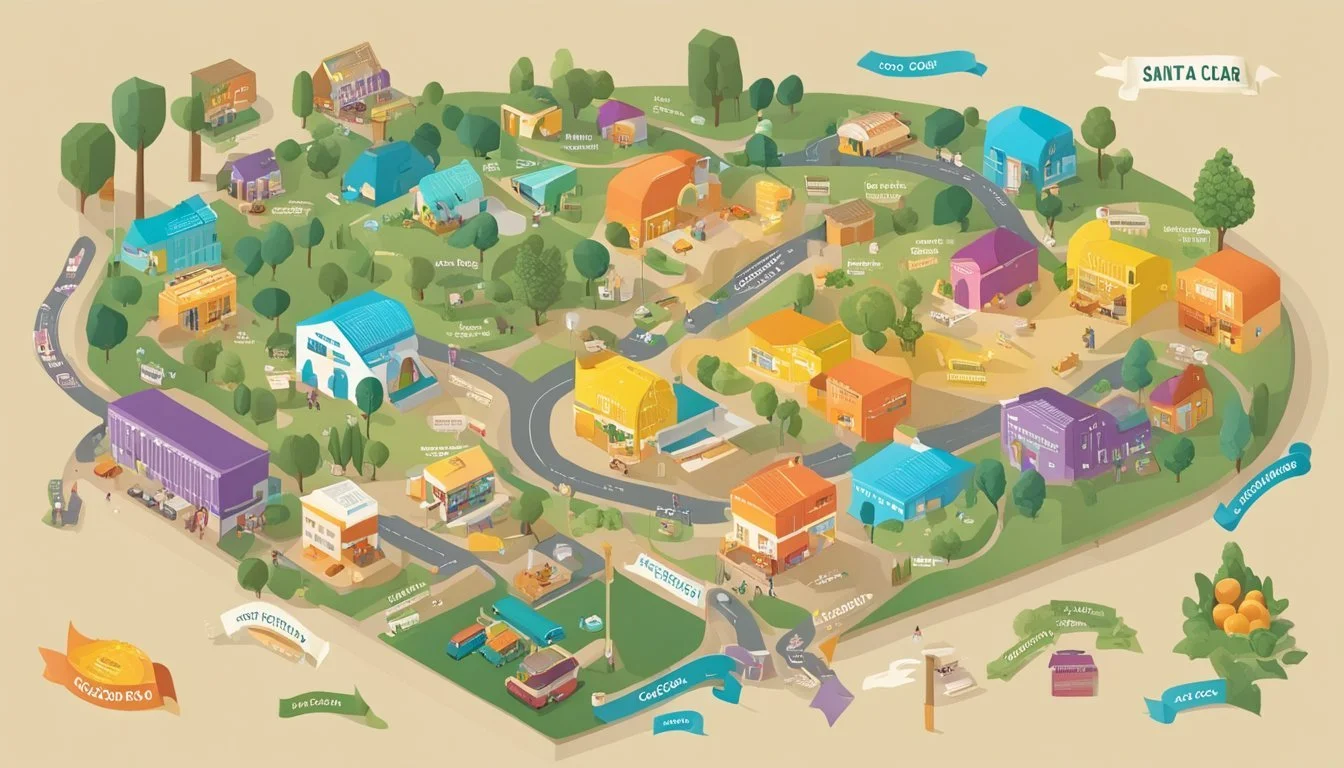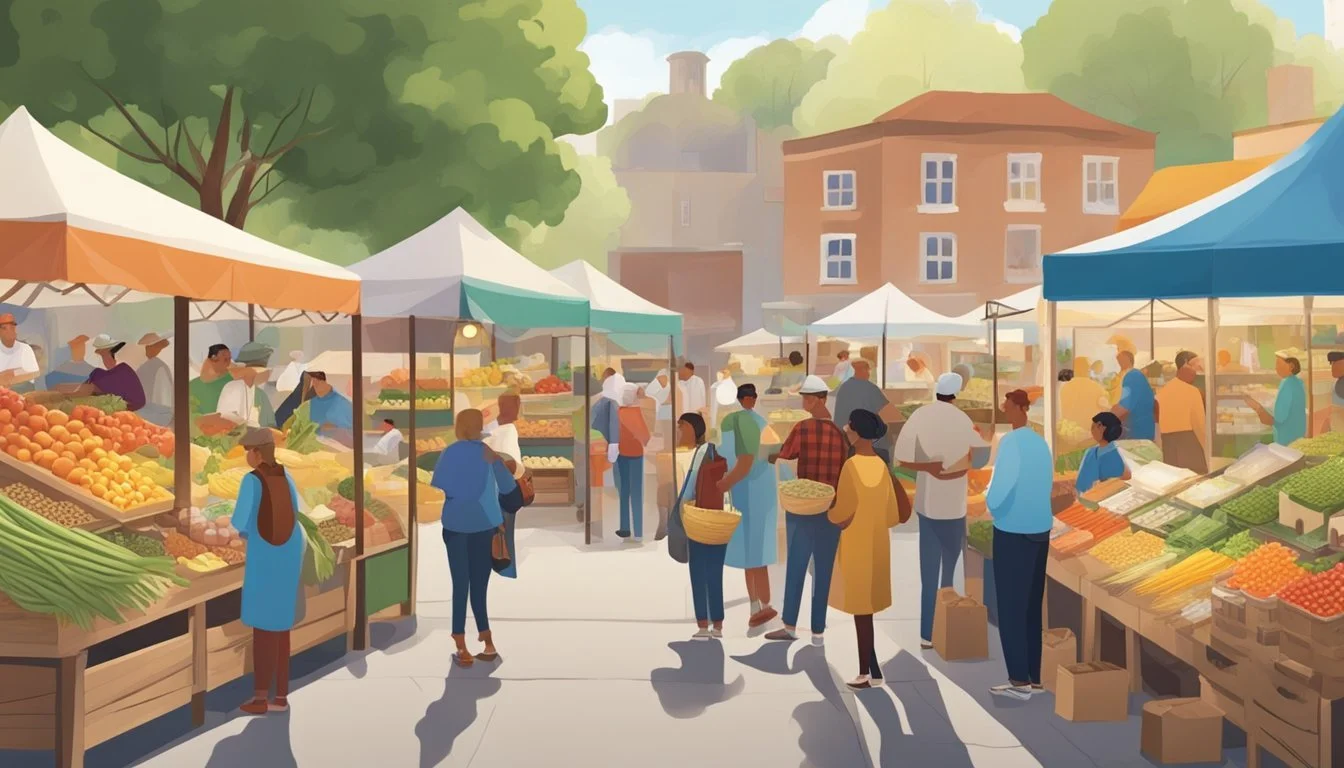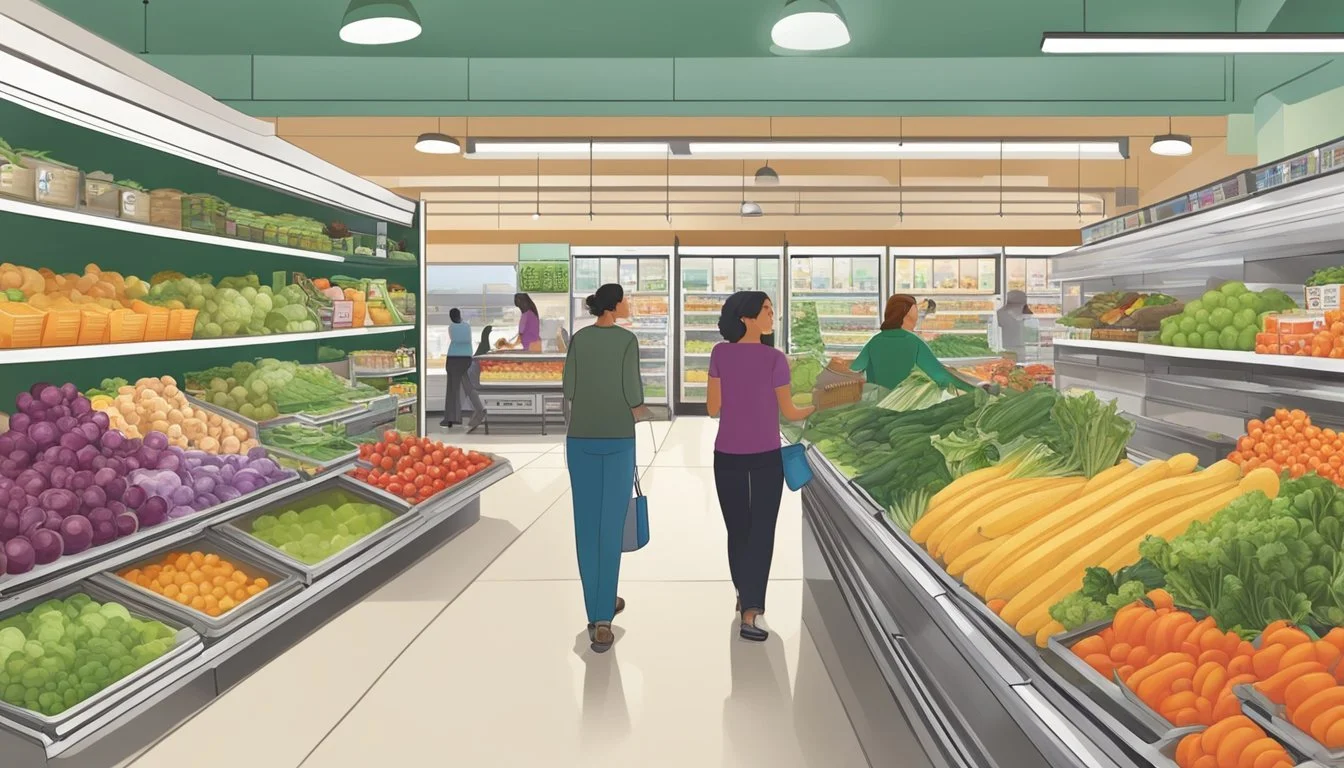Guide to Food Co-Ops in Santa Clara, CA
Navigating Local Community Food Options
The landscape of grocery shopping in Santa Clara, CA, is enriched by the presence of food co-operatives, or food co-ops, which offer an alternative to traditional supermarkets. Food co-ops are member-owned enterprises that focus on providing their communities with high-quality, locally-sourced, and often organic food options. By prioritizing local farmers and ethical sourcing, these co-ops support the regional agricultural economy and cater to consumers who value knowing where their food comes from.
Santa Clara's food co-ops distinguish themselves from larger grocery chains with their emphasis on community and consumer involvement. Members of a co-op typically have a say in the business decisions, which fosters a greater sense of ownership and responsibility towards the health and well-being of the local environment and economy. These co-ops not only provide a place to purchase food but also serve as hubs for education on sustainable practices and healthy living.
With a variety of options available, such as Veggie Box in nearby San Jose, residents of Santa Clara have access to networks of fresh produce and locally-produced items. Santa Clara's community food system presents a tapestry of farms, CSAs (Community Supported Agriculture), and farmers' markets, all interconnected to offer a rich selection of real food. Each co-op has a unique story and array of products, giving consumers the ability to choose food options that align with their values and preferences.
Understanding Food Co-Ops
Food cooperatives play a significant role in shaping community-focused food systems by prioritizing member needs and local sourcing. They are distinct in their organization and operation, guided by a philosophy rooted in community engagement and economic collaboration.
Defining Food Cooperatives
A food cooperative, or food co-op, is a member-owned and governed business that operates for the benefit of its members according to common values and principles. Members buy shares, giving them a stake in the organization and a voice in its operation. Unlike traditional grocery stores prioritizing profit, co-ops emphasize meeting their members' needs for affordable, high-quality, and locally sourced food.
History and Philosophy
The modern cooperative movement originated in Europe in the 19th century, emerging as a response to economic hardship and industrialization. This philosophy hinges on a set of principles, including democratic member control, member economic participation, and concern for community. In practice, co-ops strive to enhance food security, support local economies, and promote sustainable agriculture practices.
Types of Food Co-Ops
Food cooperatives can vary widely in structure and services but generally fall into the following categories:
Retail Co-ops: These co-ops operate storefronts that sell groceries and other goods to their members, and often to the general public. They typically source products from local growers and producers to support the local economy.
Buying Clubs: Smaller scale than retail co-ops, buying clubs involve a group of individuals who order food in bulk directly from producers or wholesalers to obtain a discount.
Worker Co-ops: In these cooperatives, employees are also the owners, sharing in the profits and decision-making processes of the business.
Each type of food co-op serves the community in unique ways, underlining the value and diversity of the cooperative model.
Benefits of Joining a Food Co-Op
By becoming a member of a food co-op in Santa Clara, CA, individuals gain access to high-quality, locally-sourced products while contributing positively to their community's economy and social fabric.
Support for Local Farms
Food co-ops typically establish strong partnerships with local farms, which means members enjoy access to fresh, locally grown produce. This support helps sustain agricultural operations in the Santa Clara region, ensuring that these farms can continue to thrive and provide fresh food for the community.
Locally Grown: Emphasis on seasonal produce from local suppliers.
Direct Impact: Strengthening of the local agricultural economy.
Quality and Selection of Products
Members prioritize quality and selection when it comes to the products available at the co-op. They often find a wider array of organic produce and health-conscious options than what's available at conventional stores, including specific products tailored for dietary needs.
Organic Produce: A prominent selection of organic food options.
Dietary Options: Catering to various dietary needs with specialized products.
Economic and Social Impact
Joining a food co-op isn't just a personal choice; it's a decision that has a broader economic impact and social impact. Members' spending reinforces the local economy, and co-ops often adopt business practices that are considerate of people and the planet—extending influence beyond mere commerce.
Economic Impact: Increased local economic retention and growth.
Social Impact: Promotion of sustainable and ethical business practices.
Membership and Ownership
In Santa Clara, California, food cooperatives offer unique benefits that hinge on membership and a sense of shared ownership. These entities are distinct from conventional grocery stores because they prioritize the needs and interests of their members, who are both customers and partial owners.
Becoming a Member
To become a member of a food cooperative in Santa Clara, individuals generally must purchase a share or pay a membership fee, which signifies their partial ownership stake in the co-op. This fee can vary by cooperative but serves as a way to contribute to the co-op's capital base. Once this initial investment is made, members are allowed to partake in the co-op's governance by voting on important decisions and standing for elected positions.
Rights and Responsibilities
Membership in a food co-op carries not only benefits but also certain responsibilities. Members typically engage in the cooperative's decision-making process, reflecting the democratic principle that one member equals one vote. This means that all members have an equal say in the direction of the co-op, from operational strategies to the election of the board. As shareholders, they are also entitled to review financial reports, reflecting their ownership of the company's profits and losses.
Member Discounts and Savings
Members of Santa Clara's food cooperatives often enjoy discounts on products as a benefit of their membership. Savings can vary but typically include a set percentage off retail prices. Additionally, members may be eligible for special sales, bulk purchase discounts, and other store-wide promotions. These financial perks are a tangible return on their investment and contribute to the cost-effectiveness of shopping at a food co-op for individuals seeking organic or natural food products.
Food Co-Ops in the Santa Clara Region
Santa Clara, CA, is a hub for local food cooperatives, each offering a distinct combination of organic products, community engagement, and sustainable practices. This section provides a directory of these co-ops, a comparison of their offerings, and details on their accessibility and locations.
Local Food Co-Op Directory
Cosentino's (San Jose, CA): Located in San Jose, Cosentino's offers certified organic produce, emphasizing locally-sourced goods.
Country Sun Natural Foods (Palo Alto, CA): This co-op provides an array of organic groceries, catering to health-conscious consumers.
Sigona's Farmers Market (Palo Alto, CA): Known for fresh produce and locally-sourced items, Sigona's supports surrounding communities.
Monta Vista Market (Cupertino, CA): Monta Vista Market champions organic produce, striving to connect consumers with locally-sourced groceries.
These establishments serve as vital links between local farmers and the community, often participating in Community Supported Agriculture (CSA) programs or acting as buying clubs.
Comparing Co-Ops in the Area
When comparing San Francisco Bay Area co-ops, distinction lies in size, product range, and specific community engagements. For example:
Product Selection: While Sigona's Farmers Market and Country Sun Natural Foods offer a broad selection of organic products, Monta Vista Market distinguishes itself with ultra-local offerings.
Community Involvement: Several co-ops extend beyond retail to engage in community support and education about sustainable agriculture.
Accessibility and Locations
Co-ops in the Santa Clara region are conveniently located for easy accessibility to residents of Santa Clara, San Jose, and neighboring cities. To get a comprehensive map, visiting each co-op's website or a local directory might be helpful.
San Jose and Palo Alto: Both are home to multiple food co-ops, making access to organic and locally-sourced food convenient.
Public Transport: Public transport systems in cities like Berkeley, Oakland, and Hayward connect consumers to co-ops easily.
Extended Reach: Some co-ops in Santa Cruz County are a short drive away, offering more options for local and organic shopping.
Each co-op's location and hours of operation cater to local convenience while supporting the broader San Francisco Bay Area's push for sustainable living.
Financial Aspects
Food co-ops in Santa Clara, California, engage in a delicate balance of managing their capital, ensuring steady income and profits, while navigating investment needs and costs. This section outlines the economic foundations that support the sustainability of food co-ops.
Understanding Co-Op Economics
In a food co-op, economics are driven by member investments and patronage dividends. Members typically buy shares, providing the cooperative with initial capital. Rather than seeking profits, food co-ops aim to break even, with any surpluses being returned to members in proportion to their purchases or reinvested in the co-op.
Managing Costs and Budgeting
Budgeting in a food co-op involves a meticulous approach to managing wholesale prices and quantity discounts. Costs are high in areas like staffing, inventory, and retail space. Wholesale prices can be balanced with strategic purchasing and by taking advantage of quantity discounts. A co-op's financial health requires careful monitoring of these expenditures against their budget.
Revenue and Funding
Revenue streams for food co-ops typically come from sales of goods. They may also receive funding from community sources or grants. Profits are generally reinvested into the co-op to cover high costs such as purchasing inventory or capital improvements, rather than being distributed as profit to shareholders.
Product Range and Sourcing
Food co-ops in Santa Clara, CA, play a crucial role in the local food system by offering a diverse range of farm-fresh products. They prioritize quality and cater to members through carefully selected sources and a community-oriented distribution model.
From Farm to Co-Op
Santa Clara's food co-ops source an array of farm-fresh products that include produce, meat, fish, and eggs directly from local farms. The co-op model fosters close relationships between growers like Capay Organic and consumers, ensuring that members receive fresh, seasonal items. This connection facilitates a farm-to-table experience where consumers can trace their food back to the source, making terms like "farm fresh to you" a tangible reality.
Produce: Vegetables and fruits often come from nearby farms.
Meat and Fish: Partnership with local ranchers and fishers ensures fresh offerings.
Eggs: Co-ops typically sell eggs from local poultry farms, with options ranging from free-range to organic.
Certified Organic and Specialized Products
Co-ops in the region take pride in offering certified organic options to their members. Organic product lines are rigorous in following national standards for organic farming and handling, including organic produce and flour. The availability of specialized products caters to varied dietary preferences and sensitivities, demonstrating the co-ops' commitment to inclusivity and health.
Organic Produce: A broad selection of vegetables and fruits is labeled as certified organic.
Flour: Sourced from mills that prioritize organic grains and low-impact processing.
Bulk Buying and Packaging
Members enjoy economic benefits through bulk buying options, which reduce costs and packaging waste. Co-ops usually offer an assortment of staple items in bulk, including grains, spices, and nuts. Larger quantities directly sourced from producers like Capay Organic enable members to stock up on essentials while supporting sustainable practices in food distribution.
Grains and Spices: Purchased in bulk and available for members to buy in the quantity they need.
Nuts: Offered in large, unpackaged quantities to minimize waste and maximize value.
Community and Education
Community food co-ops in Santa Clara not only provide access to fresh, local produce but also serve as hubs for education and community engagement. These co-ops foster a connection between consumers and farmers, encouraging sustainable practices and equipping community members with valuable knowledge and skills.
Workshops and Events
Food co-ops often host workshops and events aimed at promoting community involvement and skill-sharing. These could include cooking classes tailored to enhance nutritional awareness, or sessions on how to manage small-scale home gardens. Events like these are invaluable for building a sense of community around food and healthy living.
Promoting Sustainable Practices
Spearheading the charge for environmental responsibility, food co-ops work closely with local farmers to promote sustainable practices. They educate their members on the benefits of supporting organic and sustainable agriculture, thereby nurturing a more informed consumer base that is invested in the long-term health of the planet.
Building Consumer Knowledge
By providing transparent information about food sourcing and its impacts, co-ops play a critical role in building consumer knowledge. Members learn about where their food comes from, the importance of nutrition, and how their choices affect the local economy and environment. This education extends beyond the co-op, as individuals carry these insights into their wider communities.
Governance and Management
Food co-ops in Santa Clara, CA, operate under a structured governance and management system. These concepts are crucial to ensuring efficient operation, member representation, and adherence to cooperative principles.
Role of the Board of Directors
The Board of Directors is fundamental to the governance of food co-ops. They represent the interests of the co-op members, and their responsibilities typically include strategic planning, financial oversight, and ensuring the co-op's mission aligns with its operations. Each board member has an equal vote, reinforcing the cooperative principle of democratic member control.
Worker Cooperative Models
Worker cooperative models stand out by embodying worker ownership and participatory governance. In such models, workers have a significant stake in the management decisions and share in the profits. Management structures can vary, but the core philosophy remains: one worker, one vote, promoting equity and direct involvement in the co-op’s future.
Policies and Bylaws
Clear policies and bylaws are the backbone of a food co-op's operations. They offer guidance on membership criteria, the scope of authority for both the board and the management, and establish procedures for decision-making. These rules must align with cooperative values while complying with state laws governing nonprofits and cooperatives. Regular reviews by the board ensure these documents remain relevant and effective.
Challenges and Considerations
In Santa Clara, food co-ops face specific challenges and considerations that are critical for their operation and growth. These include market competition, supply chain intricacies, and projections regarding their future presence in the region.
Overcoming Market Competition
Food co-ops in Santa Clara must strategize to differentiate themselves from supermarkets and other food retailers. In an environment with various shopping options, they need to emphasize their unique selling propositions, such as local produce, community-oriented services, and sustainable practices. Building a loyal customer base and engaging in community-driven marketing can help mitigate the challenges of market competition.
Strategies to stand out:
Local produce: Highlighting partnerships with local farmers.
Community services: Hosting events and workshops that supermarkets typically do not offer.
Sustainability: Showcasing eco-friendly practices that appeal to environmentally conscious consumers.
Dealing with Supply Chain Issues
Supply chain disruptions pose significant problems for food co-ops. For Santa Clara's co-ops, establishing reliable networks with local farmers and producers can help cushion the impact of national supply chain breakdowns. They must frequently assess their inventory management practices to ensure a steady flow of products to their customers.
Supply chain strategies:
Local sourcing: Prioritizing produce from nearby farms to minimize dependency on disrupted national chains.
Diversification: Ensuring a variety of sources to guard against single-point failures.
Inventory practices: Adopting advanced systems for managing stock levels effectively.
Future Outlook for Food Co-Ops
The future of food co-ops in Santa Clara County is closely tied to their ability to remain sustainable and relevant. Projecting growth involves understanding consumer trends and being proactive in addressing the shifting challenges within the food market. Food co-ops must continue to innovate and adapt to ensure their place in Santa Clara's evolving food economy.
Future sustainability measures:
Consumer trends: Keeping abreast with consumer preferences for organic and locally-sourced foods.
Innovation: Implementing new technologies and services to meet the demands of modern shoppers.
Adaptability: Being flexible to changes in market competition and supply chain dynamics.









